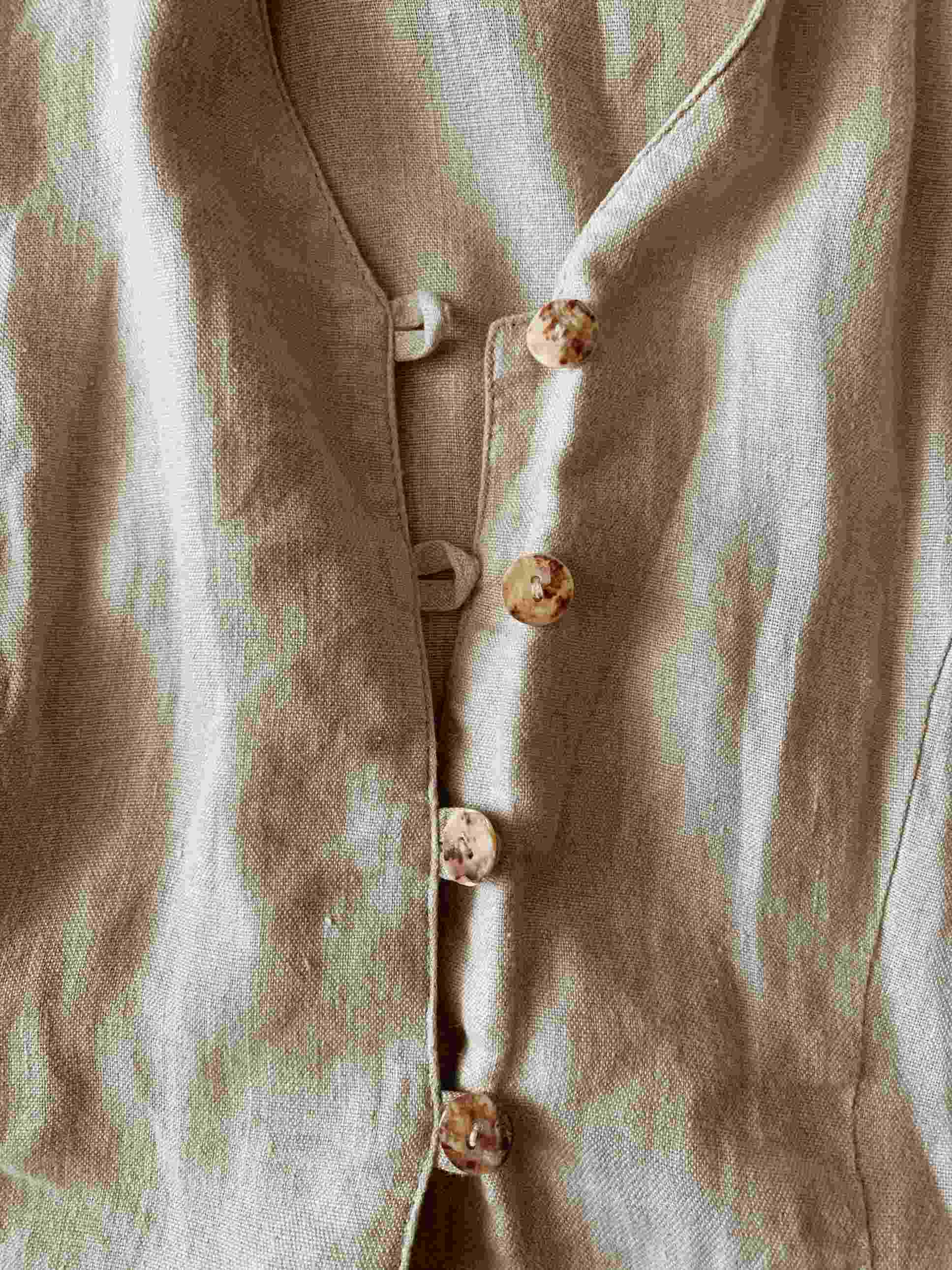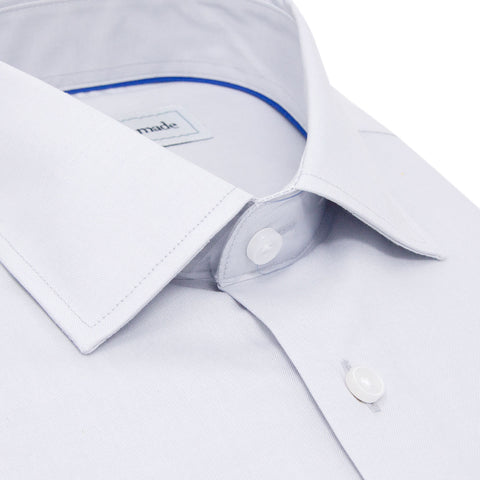
Written by Ben Chuang
Linen, a timeless and versatile fabric, has woven its way into the hearts and wardrobes of people around the world for centuries. With a rich history dating back thousands of years, linen has not only stood the test of time but has also evolved into a symbol of sophistication and comfort.
Whether you're a seasoned linen enthusiast or a newcomer eager to learn more, join us on this journey as we unravel the story behind the beauty and allure of this exceptional textile.
The History of Linen
From Ancient Roots to Modern Elegance
Linen fabric boasts a rich history dating back thousands of years. Its origins are traced to ancient civilizations, with evidence of linen production found in archaeological sites from Egypt, Mesopotamia, and the Indus Valley. The ancient Egyptians, in particular, revered linen for its association with purity and used it for clothing, mummification, and religious ceremonies.
Linen's exceptional qualities and durability made it a symbol of luxury in various cultures throughout history, from the Greeks and Romans to the Middle Ages in Europe. During the Renaissance, linen became increasingly popular for clothing, and it played a pivotal role in the development of the textile industry. Linen fabric was manufactured by hand until the nineteenth century when automation finally took over.
Today, linen fabric continues to be prized for its timeless charm and comfort, bridging the gap between ancient tradition and modern style.

What is Linen Fabric?
Linen fabric is a versatile textile woven from the fibers of the flax plant, Linum usitatissimum. Its enduring popularity is attributed to its exceptional qualities, including breathability and moisture-wicking properties, making it a favored choice for warm-weather clothing.
Linen's natural luster, durability, and timeless elegance contribute to its versatility in various applications, from clothing like shirts, dresses, and suits to household items such as bed linens, tablecloths, and towels.
Though it has a tendency to wrinkle, many appreciate the relaxed, smart casual look it lends to garments. Linen's ability to absorb moisture while remaining comfortable and its reputation for becoming softer with time make it a beloved, durable fabric choice.
The Advantages of Linen Fabric
Linen fabric is used to make a wide range of products, including clothing (such as button-down shirts, dresses, and suits), bed linens (sheets, pillowcases), tablecloths, napkins, towels, and more. It is valued for its combination of comfort, breathability, and timeless aesthetic. Here are the key characteristics of linen fabric:
- Natural Fiber: Linen is made from the cellulose fibers found in the stalks of the flax plant. These fibers are known for their strength and durability.
- Breathable: Linen is highly breathable and moisture-wicking, which makes it a comfortable choice for warm weather. It allows air to circulate, keeping the body cool and dry.
- Cool and Comfortable: Linen's natural properties help regulate body temperature, making it a popular choice for summer fashion.
- Wrinkle-Prone: Linen fabric naturally tends to wrinkle easily, giving it a relaxed, casual appearance. Some people appreciate the wrinkled look, while others may prefer to iron their linen garments for a neater appearance.
- Absorbent: Linen fabric can absorb a significant amount of moisture without feeling damp, which contributes to its comfort in hot and humid conditions.

Incorporating Linen into Your Wardrobe
Linen Shirts: A Summer Essential
Linen shirts are a must-have for any man's summer wardrobe. They strike a perfect balance between casual and refined, making them versatile for a range of occasions. Here are some tips for wearing linen shirts:
- Colors: Light colors like white, light blue, beige, and pastels work best for linen shirts. They reflect sunlight and help keep you cool.
- Fit: Linen shirts should be slightly loose. A relaxed fit ensures better airflow and prevents the fabric from clinging to your body when you sweat.
- Wrinkles: Embrace the wrinkles! Linen shirts are meant to be a bit wrinkled, which adds to their charm. If you prefer a neater look, opt for a linen blend or a linen-cotton mix, which wrinkles less.
-
Layering: Linen shirts are versatile for layering. Wear them open over a slim-fit t-shirt for a laid-back look or buttoned up for a more formal appearance.

Linen Trousers: Stay Cool and Stylish
Linen trousers are a fantastic alternative to denim jeans or chinos in summer. Here's how to make the most of them:
- Fit: Look for a slim or straight fit, depending on your body type. Baggy linen trousers can look sloppy, so aim for a tailored appearance. Here's how to measure your hip and waist measurements.
-
Colors: Lighter shades like beige, cream, or khaki are excellent choices. They pair well with a gray Oxford dress shirt to create a relaxed but stylish look.

- Casual vs. Formal: Linen trousers can be dressed up or down. Pair them with a linen shirt and loafers for a relaxed summer outfit or go with a linen blazer and dress shoes for a more polished formal look.
- Care: Linen wrinkles easily, so be prepared to embrace some creases. Hang your linen trousers to avoid excessive wrinkles and iron them if necessary, but don't expect a perfectly smooth finish.
Wearing linen fabric for men is all about embracing the relaxed, breathable, and timeless qualities of this wonderful material. Whether you choose linen fabrics for shirts, trousers, blazers, or a special combination of these, understanding the basics of fit, color coordination, and styling will help you look and feel your best during the sweltering summer months.

Frequently asked questions about linen fabric
Does linen shrink in the dryer?
Yes, linen fabric has a tendency to shrink when exposed to high heat, such as in a dryer. Linen is a natural fiber, and like many natural fibers, it can undergo some shrinkage when subjected to heat and agitation.
What is the difference between cotton and linen?
Linen fabric is derived from flax plant fibers, offering exceptional breathability, durability, and a slightly rough texture, making it ideal for hot weather but prone to wrinkles. In contrast, cotton comes from the fluffy fibers surrounding cotton plant seeds, providing softness, versatility, and comfort across different climates with less susceptibility to wrinkles.
What colors work best with linen?
Linen fabric's neutral and earthy tones, such as white, beige, and light gray, are classic choices. They pair well with a wide range of colors and patterns, making them versatile for any occasion.


Comments (0)
Back to News